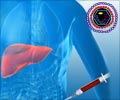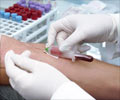Hepatitis B is a life-threatening liver disease that is mostly prevalent in Asian countries such as China and India
Hepatitis B is a life-threatening liver disease caused by the Hepatitis B virus (HBV). According to WHO reports it is a major global health issue with two million people being infected with HBV and 360 million people being afflicted with long- term liver infections.
Hepatitis B is more prevalent in China, the Indian subcontinent and other parts of Asia. It is also prevalent in the Amazonian regions and parts of central and Eastern Europe. In affluent countries of the US and Europe the incidence of the infection has significantly reduced due to widespread HBV vaccination programs.Hepatitis B is the most serious of all forms of hepatitis. Infection during childhood is always followed by a chronic condition during adulthood. The clinical spectrum associated with adult infection ranges from a self limiting acute stage with complete viral clearance (in the majority) to a symptom-free carrier state which can progress to a chronic state that puts the patients (5-10%) at a higher risk of developing cirrhosis or liver cancer.
Viral determinants and the immuno-competence of the patients have been implicated in the progression of the disease.
Modes of Transmission
HBV is a virus that is more potent than the HIV with a mode of transmission similar to the AIDS virus. It is transmitted by coming in contact with the infected person’s body fluids such as blood or semen. Some of the common methods of transmission include-
• Mother to baby (peri-natal)
• Childhood infections (interpersonal associations)
• Using infected injection needles
• Blood transfusions
• Sex (both hetero and homosexuals)
This mode of transmission puts those with unsafe practices particularly those among sex workers, health care professionals, individuals with multiple sex partners and drug addicts at a higher risk when compared to ordinary individuals.
The virus cannot be transmitted by casual contact – a popular belief that leads to the patients being ostracized in many societies. It also does not transmit through water or by sharing food.
Symptoms
The acute form of the hepatitis B will present with typical symptoms such as:-
• Jaundice or yellowing of skin, eyes and scalp,
• Extreme fatigue,
• Vomiting,
• Nausea,
• Severe abdominal pain and
• Dark urine.
The chronic infection could result in cirrhosis of the liver leading to inflammation and irrepairable damage and also hepato-carcinoma (liver cancer).
Treatment-Conventional
Acute hepatitis is managed by fluid replacement, appropriate nourishment and adequate rest and is mostly self –limiting. Chronic Hepatitis B is treated with antivirals and interferons. In the case of liver damage a transplant may be the only option.
New hope for hepatitis B
It is a hard reality that thousands continue to die world wide despite the fact that hepatitis B is preventable. The disease does not boast of a cure yet- nevertheless the future seems promising with a lot of new drugs having entered the market in the last decade. And research is promising a lot more medications on which the clinical trials are already underway.
Four nucleoside/nucleotide analogues and two immunomodulators (interferons) are currently available for treating these patients.
Nucleoside analogues
Viral DNA polymerase is an enzyme used for HBV to replicate. Nucleoside analogues are oral therapies that interfere with the functioning of the enzyme polymerase preventing viral reproduction.
The GlaxoSmithKline's Zeffix/Epivir-HBV (lamivudine) was the first nucleoside analogue that gained the FDA approval in 1998. Ever since an array of these drugs have come into the market. They include -
• Gilead's Hepsera (adefovir dipovoxil), approved in 2002,
• Bristol-Myers Squibb's Baraclude (entecavir), 2005
• Novartis/Idenix's Tyzeka/Sebivo (telbivudine), 2006
Oral HBV antivirals such as lamivudine are often subject to resistance. It is therefore important to sustain drug efficacy by developing new compounds with different action modalities. Several pharma companies keep this in mind while churning out new drugs to treat hepatitis-B.
• One such drug to soon enter the market to potentially treat drug- resistant HBV will be Gilead's Tenofovir. This nucleotide analogue has already been FDA approved and is marketed for AIDS treatment under the trade name Viread. Clinical trials point out that Tenofovir may be more effective in treating HBV than Hepsera.
• Bukwang, Eisai and Pharmasset's Clevudine, another oral nucleoside analogue, has also been shown to be very potent in treating HBV.
Immunomodulators
Immunomodulators, such as interferons, mimic the immune substances produced by the body. These drugs have been in the market for a longer period of time.
The anti-HBV interferon brands include-
• Schering-Plough's Intron-A (interferon alpha-2b), available since 1991
• Pegylated version PEG-Intron, 2005
• Roche's Pegasys (peginterferon alpha-2a), 2005.
Combination therapy
Combination therapy is expected to play an increasingly prominent role in the treatment of hepatitis -B. This kind of treatment has been known to work out well for AIDS.
Combination therapy has good potential in reducing drug resistance and in inhibiting viral replication.
• Idenix and Novartis are working on Valtorcitabine, a one-a-day nucleoside analogue. This is to be used, in the treatment of non-responsive or difficult- to -treat patients, in combination with Tyzeka. Phase II trials are ongoing.
Global market
Although several effective drugs are available to benefit the patients, the market is limited because the majority of the patients live in countries where modern medical care is not easy to come by. Analysts however have estimated the global HBV market to be worth $750 million.
The pharmaceutical companies foresee a strong market in the Asian countries where 70% of chronic HBV carriers live. Among these countries, China is the strongest contender as 34% of the world’s population of chronic hepatitis B patients live in this Asian country.
The treatment of hepatitis-B has developed by leaps and bounds. Increased awareness of the disease and new treatment options have raised the hopes of a larger number of patients being treated for the disease. There is a greater chance for patients to manage the disease and keep it well within control.
Relentless research and new drugs have brought hope for the HBV affected–and their future seems to be brighter than it has ever been before!
Hepatitis B- Facts
• Approximately 25% of those who become chronically infected during childhood later succumb to liver cancer or cirrhosis
• Estimates reveal that in the US alone 5,000 HBV infected die annually from failed liver
• 70% of chronic carriers of HBV live in Asia
• Asia accounts for 50% of deaths due to hepatitis B worldwide. Among the Asian countries China is by far the most affected
• Since 1982, more than one billion doses of hepatitis B vaccine have been dispensed with globally
Source-Medindia
Dr. Reeja Tharu/L













